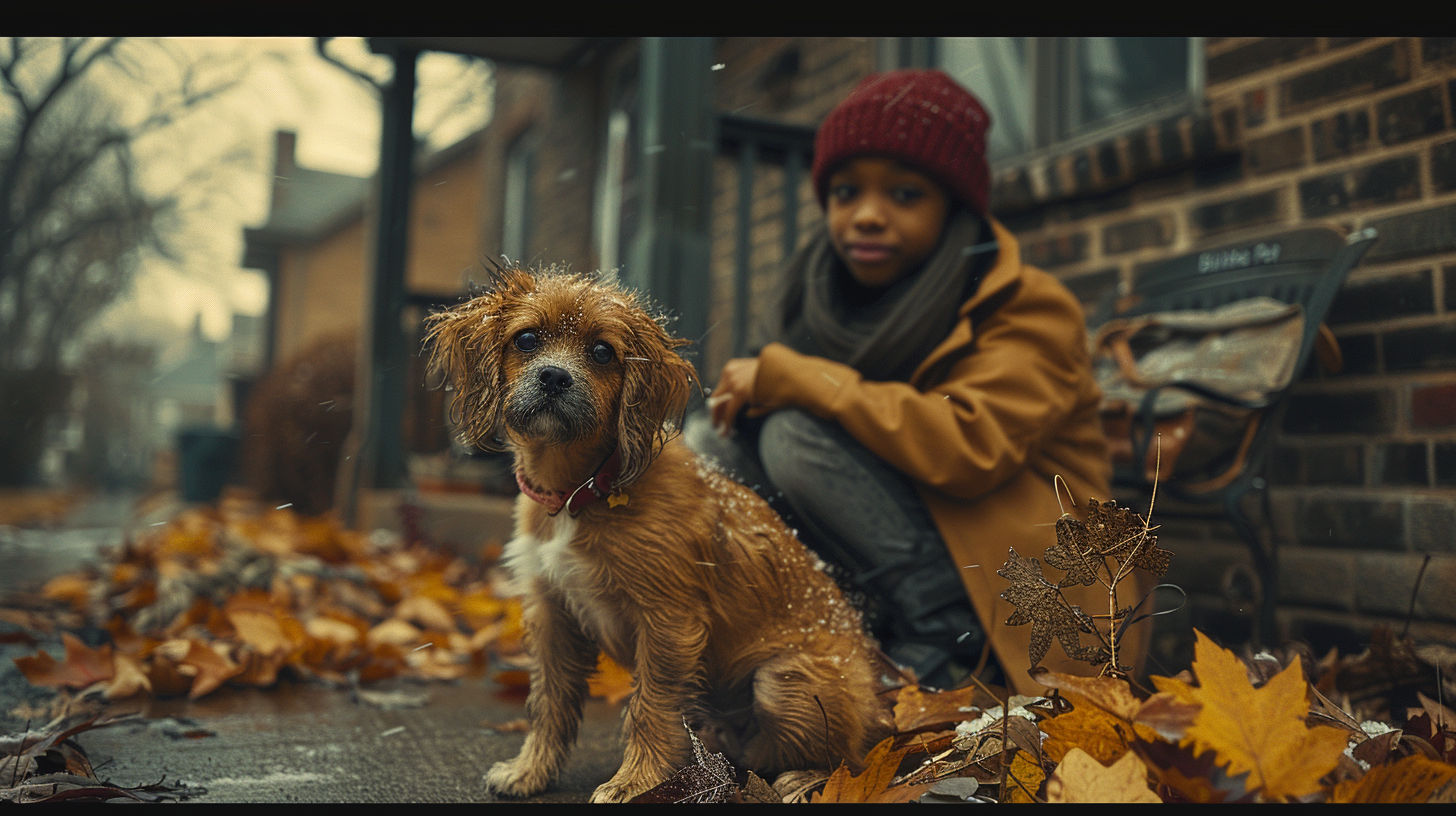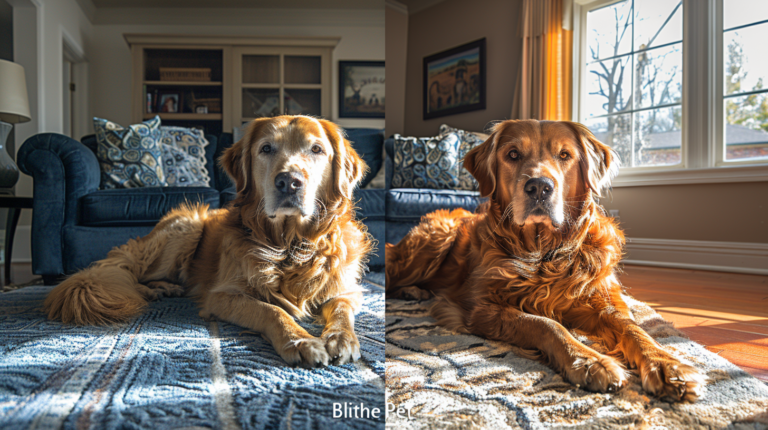Discover alarming Ohio pets missing trends and proven recovery strategies. Learn why 10,000+ pets disappear yearly in Ohio and how to protect yours with expert tips.
Table of Contents
Every year, thousands of heartbroken Ohio families face the devastating reality of a missing pet. With over 10 million dogs going missing annually across the United States, Ohio contributes significantly to this staggering statistic. The good news? An Ohio State Study showed that 71% of lost dogs were recovered compared to 53% of lost cats, proving that preparation and quick action can make all the difference.

When I first adopted my rescue dog Max from a Columbus shelter three years ago, I never imagined I’d become one of those pet owners frantically posting “missing dog” flyers around my neighborhood. That terrifying 48-hour experience taught me invaluable lessons about pet safety that every Ohio pet owner should know.
The landscape of Ohio pets missing cases has evolved dramatically in recent years, with missing pets spiking by 49% in summer months. This comprehensive guide reveals three shocking trends plaguing Ohio pet owners and four proven strategies that can dramatically increase your chances of a happy reunion.
Pet Recovery Methods Comparison
| Recovery Method | Success Rate | Time to Recovery | Cost Range | Best For |
|---|---|---|---|---|
| Microchip + Registration | 85% | 24-48 hours | $25-$50 | All pets, especially outdoor cats |
| Social Media Campaigns | 65% | 3-7 days | Free-$20 | Urban/suburban areas with active communities |
| Professional Search Services | 78% | 5-14 days | $500-$2,000 | Rural areas, special needs pets |
| GPS Tracking Collars | 95% (if worn) | 2-6 hours | $150-$400 | Escape-prone pets, outdoor adventures |
| Community Flyers | 45% | 7-21 days | $20-$100 | Older demographics, rural communities |
| Shelter Monitoring | 71% | 3-10 days | Free | All pets, required baseline effort |
| Scent Trails & Familiar Items | 55% | 1-5 days | $10-$30 | Recently missing pets within 2-mile radius |
The Current State of Ohio Pets Missing: Alarming Statistics
Ohio faces a significant crisis with missing pets that extends far beyond individual heartbreak. Thousands of pets disappear each year across both urban and rural areas, making the problem widespread across the state. The emotional and financial toll on families is immeasurable, but understanding the scope helps us develop better prevention strategies.
Trend #1: Summer Surge Phenomenon
The most shocking trend affecting Ohio pets missing cases is the dramatic seasonal spike. Missing pets spike by 49% in summer months, creating a perfect storm of risk factors that catch pet owners off guard.
Why Summer Creates More Missing Pets:
- Increased outdoor activities and travel
- Fireworks and thunderstorms causing panic escapes
- Open doors and windows during gatherings
- Construction noise and disrupted routines
- More time spent at parks and recreational areas
Geographic Hotspots in Ohio: Summer missing pet cases concentrate heavily in:
- Lake Erie shoreline communities during vacation season
- Columbus and Cleveland metropolitan areas during festivals
- Rural counties during farming season disruptions
- University towns when students move in/out
Trend #2: The Recovery Rate Gender Gap
Pet owners are more likely to recover neutered cats than sexually intact felines—57% versus 25%. This striking difference reveals how biological drives significantly impact missing pet scenarios.
Spayed/Neutered Pets Show Higher Return Rates Because:
- Reduced territorial roaming behaviors
- Less attraction to potential mates
- Decreased aggression and fight-or-flight responses
- Better response to familiar voices and scents
- Stronger attachment to home territory
Intact Pets Face Additional Challenges:
- Males may travel miles following scent trails
- Females in heat attract unwanted attention
- Higher likelihood of getting trapped or injured
- Increased aggression toward rescuers
- More prone to joining feral colonies
Trend #3: Technology Gaps in Rural Areas
While urban Ohio communities benefit from extensive social media networks and surveillance systems, rural areas struggle with unique challenges for Ohio pets missing cases.
Rural Recovery Obstacles:
- Limited cell phone coverage for GPS tracking
- Fewer neighbors to spot missing pets
- Vast territories making searches difficult
- Wildlife predators posing additional threats
- Delayed reporting due to assumption pets are "exploring"
Urban Advantages:
- Dense social media community sharing
- Security cameras capturing movement patterns
- Professional pet search services available
- Multiple veterinary clinics for scanning chips
- Higher population density increasing sighting chances
Fix #1: The Microchip Advantage - Your Pet's Digital Lifeline
Microchipped pets are three times more likely to be reunited with their owners, making this the single most effective tool for Ohio pets missing prevention and recovery.
Understanding Microchip Technology
If your pet gets lost and is taken to an animal shelter or veterinarian, they will scan the microchip to read its unique dog or cat ID code. This is the number used by HomeAgain® to identify the pet and retrieve your contact information.
Modern Microchip Features:
- About the size of a grain of rice, so it's not noticeable or painful after it's implanted
- Permanent identification lasting your pet's lifetime
- Universal scanning technology accepted nationwide
- Temperature sensors in advanced models
- GPS capabilities in newer premium chips
Proper Registration Protocol
Simply implanting a microchip isn't enough. As soon as your pet has their microchip, you need to enroll it into the PETtrac Pet Recovery Network provided by the chip's manufacturer.
Essential Registration Steps:
- Immediate Enrollment: Register within 24 hours of implantation
- Complete Information: Include multiple contact numbers and emergency contacts
- Regular Updates: Review and update information quarterly
- Backup Systems: Register with multiple databases for redundancy
- Medical Notes: Include critical health information for emergencies
Common Registration Mistakes to Avoid:
- Using outdated phone numbers or addresses
- Failing to notify registry of moves
- Not including veterinary contact information
- Assuming one-time registration is permanent
- Neglecting to inform family members of chip details
Fix #2: Creating an Unbreachable Home Security System
Most Ohio pets missing cases begin at home with preventable escapes. A comprehensive home security approach addresses every potential exit point and behavioral trigger.
Physical Barriers and Reinforcement
Fence Assessment Checklist:
- Height minimum: 6 feet for large dogs, 8 feet for athletic breeds
- No gaps larger than 4 inches anywhere along perimeter
- Buried wire or concrete footer preventing digging
- Angled tops or coyote rollers for climbing prevention
- Regular inspection for weather damage or wear
Door and Window Protocols:
- Double-latch systems on all exterior doors
- Screen door reinforcement with pet-resistant material
- Window screen security locks preventing push-outs
- Sliding door secondary locks at floor level
- Storm door installation for added protection
Behavioral Escape Prevention
Training Components:
- Solid "stay" command lasting minimum 30 seconds
- "Wait" command before crossing thresholds
- Recall training with high-value reward system
- Desensitization to common escape triggers
- Emergency "drop" command for dangerous situations
Environmental Management:
- Consistent daily routines reducing anxiety
- Safe spaces during stressful events (storms, fireworks)
- Mental stimulation preventing boredom escapes
- Regular exercise reducing pent-up energy
- Positive associations with home territory
Seasonal Pet Safety Risk Factors in Ohio
| Season | Risk Level | Common Triggers | Peak Risk Times | Prevention Strategies |
|---|---|---|---|---|
| Spring | High | Construction noise, mating season, thunderstorms | March-May evenings | Secure fencing, noise desensitization, spay/neuter |
| Summer | Very High | Fireworks, travel, festivals, open doors | July 4th weekend, vacation months | Extra supervision, sound training, travel preparation |
| Fall | Moderate | School schedule changes, hunting season, weather shifts | September-October | Routine consistency, bright collar colors, exercise maintenance |
| Winter | Low-Moderate | Holiday gatherings, cold stress, salt irritation | New Year's Eve, Christmas week | Indoor enrichment, paw protection, guest management |
High-Risk Events Calendar
Common Warning Signs Your Pet Might Go Missing
Recognizing early warning signs can prevent Ohio pets missing incidents before they occur. These behavioral changes often indicate increased flight risk.
Behavioral Red Flags
Immediate Attention Required:
- Increased pacing or restlessness near exits
- Excessive interest in outdoor sounds or scents
- Destructive behavior near doors or windows
- Changes in appetite or sleep patterns
- Heightened anxiety during routine activities
Environmental Triggers:
- New construction or loud noises in neighborhood
- Changes in household members or routines
- Introduction of new pets or loss of companion animals
- Seasonal changes affecting outdoor time
- Medical conditions causing confusion or discomfort
High-Risk Situations
Calendar Awareness:
- July 4th and New Year's Eve (fireworks)
- Moving day preparations and execution
- Home renovation or repair projects
- Holiday gatherings with frequent door openings
- Storm season (spring and early summer in Ohio)
Travel Considerations:
- Boarding facility transitions
- Car travel to unfamiliar locations
- Visiting friends or family with different pet policies
- Camping or outdoor recreation activities
- Emergency evacuations or temporary relocations
Fix #3: Building Your Rapid Response Network
The first 24 hours are critical for Ohio pets missing recovery success. Having a prepared action plan and support network dramatically improves outcomes.
Immediate Action Protocol (First Hour)
Step-by-Step Response:
- Contact Registry: Report to microchip company within 15 minutes
- Photograph Gathering: Collect recent, clear photos from multiple angles
- Scent Items: Place worn clothing and favorite toys outside
- Contact Network: Notify pre-arranged search team members
- Social Media: Post on Ohio-specific lost pet Facebook groups
Essential Contacts List:
- Local animal shelters and rescue organizations
- Veterinary clinics within 10-mile radius
- Professional pet search services
- Trusted neighbors and community members
- Animal control and police non-emergency lines
Community Engagement Strategies
Social Media Optimization:
- Join Ohio-specific lost pet groups before emergencies occur
- Create shareable posts with clear, recent photos
- Include specific identifying features and behavioral traits
- Use location-specific hashtags (#ColumbusPets #ClevelandDogs)
- Cross-post to multiple platforms (Facebook, Instagram, Nextdoor)
Physical Search Coordination:
- Organize search parties with assigned grid sections
- Provide searchers with photos and identifying information
- Establish communication protocols and check-in times
- Focus on likely hiding spots (under porches, in bushes)
- Search during dawn and dusk when pets are most active
Fix #4: Professional Resources and Technology Integration
Modern technology offers unprecedented tools for Ohio pets missing recovery, but knowing which resources to use and when makes the difference between success and continued searching.
GPS Tracking Solutions
Real-Time Tracking Options:
- Collar-mounted GPS devices with cellular connectivity
- Smartphone app integration for remote monitoring
- Geofence alerts when pets leave designated areas
- Battery life considerations and charging schedules
- Waterproof and durable construction for active pets
Smart Collar Features:
- Activity monitoring detecting unusual behavior patterns
- Health tracking identifying medical emergencies
- Two-way communication allowing voice commands
- LED lighting for nighttime visibility
- Emergency contact information display
Professional Search Services
When to Hire Professionals:
- After 48 hours with no confirmed sightings
- In rural or heavily wooded areas
- For elderly or special needs pets
- During extreme weather conditions
- When volunteer search efforts reach limitations
Professional Capabilities:
- Trained search dogs with scent tracking abilities
- Drone surveillance covering large territories quickly
- Thermal imaging technology for nighttime searches
- Trap placement and monitoring expertise
- Coordination with law enforcement and animal control
24-Hour Emergency Response Checklist
Time-based action plan for maximum recovery success
| Time Frame | Priority Level | Action Items | Contact Method | Success Indicators |
|---|---|---|---|---|
| 0-30 Minutes | CRITICAL | Search immediate area, call microchip registry, gather photos | Phone calls, text alerts | Pet found nearby, chip activated |
| 30-60 Minutes | HIGH | Post on social media, contact local shelters, place scent items | Social media, phone calls | Community sharing begins, shelters alerted |
| 1-3 Hours | HIGH | Create and distribute flyers, expand search radius | In-person visits, email | Physical search organized, wider awareness |
| 3-6 Hours | MEDIUM | Contact veterinary clinics, animal control, rescue groups | Phone calls, online forms | Professional network engaged |
| 6-12 Hours | MEDIUM | Organize volunteer search teams, set up feeding stations | Group messaging, coordination apps | Search parties active, feeding stations placed |
| 12-24 Hours | ONGOING | Consider professional search services, expand social media reach | Professional consultation, media outreach | Professional assessment, media coverage |
Essential Contact Priority List
Debunking Common Ohio Pet Recovery Myths
Misinformation can sabotage recovery efforts and waste precious time during Ohio pets missing emergencies.
Myth #1: "Pets Always Come Home on Their Own"
Reality Check: While some pets do return independently, only 71% of lost dogs are recovered, and this requires active human intervention in most cases. Waiting passively dramatically reduces success chances.
Why Pets Don't Always Return:
- Territorial displacement causing navigation confusion
- Fear responses preventing recognition of familiar areas
- Physical barriers blocking return routes
- Injury or illness limiting mobility
- Human interference or well-meaning "rescues"
Myth #2: "Indoor Cats Don't Need Identification"
Truth: Indoor cats face the highest risk when they escape because they lack outdoor survival skills and area familiarity. Microchipping is essential for all cats regardless of lifestyle.
Indoor Cat Vulnerabilities:
- No established outdoor territory knowledge
- Lack of street awareness and traffic dangers
- Unfamiliarity with weather protection needs
- Higher stress levels causing poor decision-making
- Increased hiding behaviors making recovery difficult
Myth #3: "Posting on Social Media Is Enough"
Reality: While social media is valuable, successful recovery requires multi-channel approaches including physical searches, professional resources, and community engagement.
Comprehensive Strategy Components:
- Physical flyer distribution in targeted areas
- Direct contact with shelters and veterinary clinics
- Professional search service consultation when appropriate
- Community volunteer coordination and management
- Traditional media coverage for wide-reaching cases
When to Consult Veterinary Professionals
Knowing when to involve veterinary expertise can be crucial for both prevention and recovery of Ohio pets missing cases.
Pre-Emptive Veterinary Consultation
Annual Safety Reviews:
- Microchip scanning and registration verification
- Behavioral assessment for escape risk factors
- Physical examination identifying mobility limitations
- Medication review for anxiety or cognitive issues
- Vaccination updates ensuring shelter surrender readiness
Special Circumstances Requiring Veterinary Input:
- Senior pets with cognitive decline symptoms
- Pets with chronic medical conditions requiring medication
- Recently adopted animals with unknown behavioral history
- Pets showing increased anxiety or behavioral changes
- Animals recovering from illness or surgery
Post-Recovery Veterinary Care
Immediate Health Assessment:
- Complete physical examination checking for injuries
- Dehydration and nutritional status evaluation
- Parasite screening and treatment protocols
- Stress-related condition monitoring
- Behavioral assessment for trauma responses
Long-Term Monitoring:
- Follow-up examinations within one week
- Behavioral modification consultation if needed
- Preventive care schedule adjustment
- Emergency preparedness plan updates
- Family education on recognizing distress signs
Creating Your Personal Pet Emergency Preparedness Plan
Every Ohio pet owner should have a customized emergency plan addressing their specific circumstances and pet needs.
Essential Plan Components
Documentation Package:
- Current photographs from multiple angles
- Detailed physical description including markings
- Behavioral traits and response patterns
- Medical information and medication lists
- Emergency contact network with relationships
Emergency Kit Contents:
- Recent photos in both digital and printed formats
- Leash, collar, and carrier for safe transport
- High-value treats for luring and reward
- Familiar blanket or toy with home scents
- First aid supplies for minor injuries
Family Communication Protocol
Role Assignments:
- Primary searcher coordinating all activities
- Social media manager handling online communications
- Contact person managing shelter and veterinary calls
- Community liaison organizing volunteer searches
- Documentation keeper tracking all leads and activities
Communication Schedule:
- Hourly check-ins during active search periods
- Daily status updates for extended searches
- Weekly strategy reviews and plan adjustments
- Celebration protocols for successful reunions
- Support systems for family members during stress
The Emotional Journey: Supporting Families During Pet Loss
The psychological impact of Ohio pets missing extends far beyond the immediate crisis, affecting entire families for extended periods.
Immediate Emotional Support
Healthy Coping Strategies:
- Maintaining hope while preparing for various outcomes
- Channeling anxiety into productive search activities
- Accepting help from friends and community members
- Taking care of physical needs (eating, sleeping, exercise)
- Limiting social media exposure to prevent overwhelm
Warning Signs Requiring Professional Help:
- Sleep disruption lasting more than one week
- Inability to focus on work or daily responsibilities
- Withdrawal from family and social activities
- Excessive guilt or self-blame regarding the loss
- Physical symptoms of stress (headaches, digestive issues)
Long-Term Recovery Process
Healthy Processing Methods:
- Sharing experiences with other pet owners who understand
- Creating memorial activities honoring the missing pet
- Channeling energy into pet safety advocacy
- Considering professional counseling for complex grief
- Making informed decisions about future pet adoption
For more expert pet care tips and product recommendations, visit BlithePest.com — your trusted source for pet wellness.
Technology Trends Shaping Future Pet Recovery
Emerging technologies promise to revolutionize how we prevent and respond to Ohio pets missing situations.
Artificial Intelligence Applications
AI-Powered Matching Systems:
- Facial recognition software identifying pets from photos
- Pattern analysis predicting likely movement directions
- Automated alert systems cross-referencing found pet reports
- Behavioral modeling suggesting search strategies
- Risk assessment algorithms identifying high-probability escape scenarios
Smart Home Integration:
- Automated door monitoring preventing accidental escapes
- Camera systems with pet-specific motion detection
- Smart collar integration with home security systems
- Voice command systems for emergency pet recall
- Environmental monitoring alerting to stress triggers
Community Technology Solutions
Neighborhood Watch Apps:
- Real-time pet sighting reporting with GPS coordinates
- Community alert systems for missing pet notifications
- Volunteer coordination platforms organizing search efforts
- Resource sharing networks providing equipment and expertise
- Success story databases improving search strategies
Data Analytics Applications:
- Seasonal pattern analysis predicting high-risk periods
- Geographic modeling identifying common escape routes
- Recovery time predictions based on pet characteristics
- Success rate tracking for different search methods
- Resource allocation optimization for search efforts
Building Resilient Pet Communities in Ohio
Creating stronger community networks enhances protection for all pets while providing support systems for families facing missing pet crises.
Neighborhood Preparedness Programs
Community Education Initiatives:
- Microchip clinics with registration assistance
- Pet safety workshops covering escape prevention
- Search technique training for volunteer responders
- First aid certification for pet-related emergencies
- Communication protocol development for neighborhood alerts
Resource Sharing Networks:
- Equipment lending libraries (carriers, leashes, traps)
- Volunteer databases with specialized skills and availability
- Transportation coordination for search activities
- Childcare support during family search efforts
- Meal trains and practical assistance for searching families
Collaboration with Local Authorities
Partnership Development:
- Animal control coordination improving response times
- Police department education on pet recovery priorities
- Fire department awareness of pet rescue techniques
- Emergency management integration including pets in disaster plans
- Municipal policy advocacy for pet-friendly community design
Professional Service Integration:
- Veterinary clinic networks providing emergency scanning
- Professional search service referral systems
- Animal shelter coordination preventing duplicate efforts
- Media relations strategies amplifying search efforts
- Legal resource connections for ownership disputes
Frequently Asked Questions
Expert answers to your most common pet care concerns
How can I prevent my dog from escaping during thunderstorms?
What information should I include on my pet's ID tags?
How long should I wait before reporting my pet missing?
Should I use GPS collars for my outdoor cat?
What are the most effective search techniques for missing pets?
How do I prepare my family for a pet emergency?
Conclusion: Your Pet's Safety Starts Today
The reality of Ohio pets missing affects thousands of families annually, but preparation and community support can dramatically improve outcomes. With 71% of lost dogs recovered in Ohio through proper action, your proactive approach today could be the difference between heartbreak and a happy reunion tomorrow.
Key Takeaways for Ohio Pet Owners:
- Microchipping increases recovery chances three-fold
- Summer months require extra vigilance and preparation
- Quick response within the first 24 hours is critical
- Community networks provide invaluable support and resources
- Professional services should supplement, not replace, family efforts
Your Action Plan Starting Today:
- Schedule microchip implantation and registration verification
- Assess and improve home security measures
- Build your emergency response network and contact list
- Join local pet community groups and recovery networks
- Create your personalized emergency preparedness plan
Remember, every Ohio pet deserves the security of a prepared family and supportive community. The investment you make today in prevention and preparation pays dividends in peace of mind and, if needed, successful recovery.
The bond between pets and families is irreplaceable, but the heartbreak of separation is preventable. Take action today, involve your community, and give your beloved companions the protection they deserve.
Have a similar experience with your pet? Share it in the comments below! Don't forget to check out our other helpful guides at BlithePet.com.







